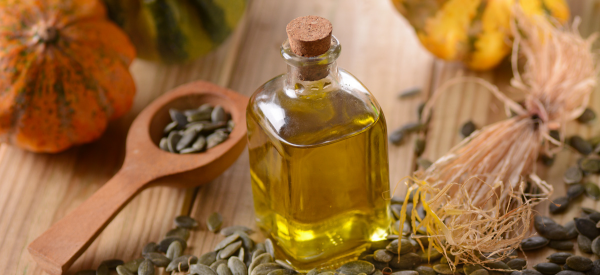
The Power of our Breath is immense. To mind the breath is to make a decision. The second we choose to mind the breath, we have decided that this moment is worthy of our full attention. The instant we do this, we have extricated ourselves from the hold of the past and the pull of the future. We are living life today, not yesterday, not tomorrow. Breath awareness simply put is when we pay attention to the way we are breathing, and then breathe more deeply and more fully than we usually do.
Breathing is the power behind all of our movement and is the source of our stamina and vitality. No other automatic system in the body is affected by our state of mind. When we are angry, our breath becomes shallow and rapid. When we are relaxed, our breath is slow and deep. If we pay attention to our breathing patterns, we will find this to be true. When we are enjoying ourselves, our breath is deep and easy, and when we are having an unpleasant experience, the breath is often constricted. Many people even have a tendency to hold their breath during stress. Not only is breath holding in itself stressful, but it aggravates our mood and decreases our performance.
Remember the newborn baby! It doesn’t have a care in the world. It’s breathing is deep and slow and rhythmic. It’s abdomen is relaxed. It’s lungs fill easily and fully.
Nature intended us to breathe like this all the time. If reactions to the constant stresses of life weren’t overloading our circuits, the process would be sustained the way it was when we took our first breaths. But life requires reactions. As soon as a child realizes that there are expectations of him, first from his mother and then from others, he learns to become what he is not in order to get what he needs. Because he is acting in ways contrary to his nature, tension is generated. Breathing becomes shallow, restrictive and held, and over time the habit of breathing only through the upper part of the lungs, is developed. In addition, as we continue to grow, we are often taught to hold the stomach in, which inhibits deep breathing and reinforces the inclination toward this shallow, rapid breath.
This type of breath is often referred to as “chest breathing”, since the breath only fills the top portion of the lungs. As a result, the lower lobes of the lungs , where most of the blood and oxygen exchange occurs, are not sufficiently ventilated and the body does not receive enough oxygen and energy. To compound that, carbon dioxide and other toxins which are trapped in the lower portion of the lungs, are not effectively eliminated. Adequate amounts of oxygen are needed for cellular respiration, cell metabolism and brain function. When the breath is consistently shallow, the body does not rid of enough carbon dioxide to allow for good health. Furthermore, chest breathing overstimulates the sympathetic nervous system keeping heart rate and blood pressure too high. This in turn precipitates difficulties with digestion and elimination, creates muscle tension, increases anxiety, exacerbates illness, and can even cause cold and clammy hands and feet, and headaches.
In today’s world we sit, stand, sleep, move, and even speak in ways which undermine our breath, and impact our physical and emotional health. We carry enormous amounts of tension in our bodies. Tension impedes the harmonious movement of the diaphragm and it’s coordination with the secondary breathing muscles.
The feeling is a familiar one. Something trivial has gotten us all worked up and our memory starts to lapse and we become confused.
Or we are waiting in line at the bank, the grocery, or the pharmacy. The line snails along. The cashier appears to be moving slower than molasses. Our head starts throbbing. Short, jerky breathing compounds our frustration and anger. These types of reactions to waiting cost a great deal in terms of lifespan and health, not to mention the quality of our day to day life. Learning to breathe properly in response to a trying situation can be of extraordinary value. So much of our free time is spent waiting…often impatiently and angrily.
If we are able to relax in a waiting situation, we gain patience and joy from having nothing else to do but be kind to ourselves and those around us.
Breath alone can prevent and cure most ailments. We only use 1/7th of our lungs in normal breathing which means we are only breathing in 500 cubic centimeters of oxygen per breath. If we use our breath to it’s capacity, we can learn to breathe in 3700 cubic centimeters. Breathing tactics can also be applied to pain in many situations. The successful use of breathing for pain control in childbirth has long been established, yet many people remain ignorant of the personal source of relief for day-to-day pain. Focusing on the breath usually takes the mind off the pain. In addition to the change in attention, breath enables us to relax muscles in the vicinity of the pain. These muscles tend to contract and become rigid. The stiffness of an injured joint keeps it from being easily used. The same rigidity restricts the blood flow and lymphatic fluid through this area. This slows the supply of healing agents and removal of damaged tissue. Breathing for relaxation opens up the flow and speeds healing. The use of breathing techniques for alleviating pain has gained acceptance in the medical community. An emergency study found that when injury was followed by deep breathing exercises, patients healed up to three times faster.
The breath is always moving and changing. A good way to understand the connection between the breath and vitality is to see how often we need to breathe. Every other bodily function in life such as eating, drinking, digestion and elimination, can be delayed. BUT NOT THE BREATH. If we go without a drink for an hour we probably won’t notice, but if we stop breathing, for even a few seconds, we will start to focus on it pretty darn quick .
When we feel most alive and filled with vitality, we call ourselves “inspired”, which translated from Greek means “filled with spirit”. When all of our energy leaves us, and we pass from this life, we “expire”, or die. Taking in a full breath is also called “inspiration” and letting a full breath out is called “expiration”.
In yoga, breathing exercises are called “pranayama”, which means control of vital energy. Prana is the word for “life force” and easterners believe that all living beings are infused with it. When we practice pranayama we are learning to pay attention to our breath. Paying attention to the breath quickly induces the relaxation response and enhances the immune system. It also helps to clear and calm the mind, focus attention and develop concentration. Additionally, pranayama improves metabolic function and assists in cardiovascular function, refreshing and renewing the body. Research has shown that slowing down and deepening our breath can slow the heart, normalize blood pressure, increase blood flow to the digestive system, alleviate asthma and insomnia, increase energy and improve memory. Proper breathing has even been known to raise performance levels in school and sports.
Practicing pranayama helps us create a balance between the inhalations and the exhalations. Usually, the inhalation is the stimulating part of the breath, whereas the exhalation is the cleansing, relaxing part of the breath. Without an even balance of the two, the mind and body can become adversely affected. In general, the inhalations stimulate the heart rate and exhalations decrease the heart rate. So an even balance between the two is optimal for the heart rate as wells the entire body and mind. When we place too much emphasis on the inhalation, we gasp breath in quickly, over energizing the body to the point of anxiety and panic. If we don’t take enough of an inhalation, the body does not become energized effectively, leading to depression, sadness and lack of energy.
When there is too much emphasis on the exhalation, this is often considered a “sad breath”. If we don’t take enough of an inhalation, the body does not become energized effectively, leading to depression, sadness and lack of energy.
Proper use of our breath will enhance our ability to feel, to listen inwardly, to be guided from within and thereby to learn from ourselves.
Our breath is really our best friend because it is always there for us when we need it!
About Susan Smolin
Susan Wolf Smolin is a certified yoga instructor offering therapeutic and rehabilitative instruction to a variety of populations, from pre-natal to seniors. Susan has been studying and teaching for over 20 years and she shares her passion for communicating the teachings of ancient tradition and the importance of its presence in modern times. For more informationon Yoga for Seniors contact Susan at peaceyoga@rocketmail.com.



